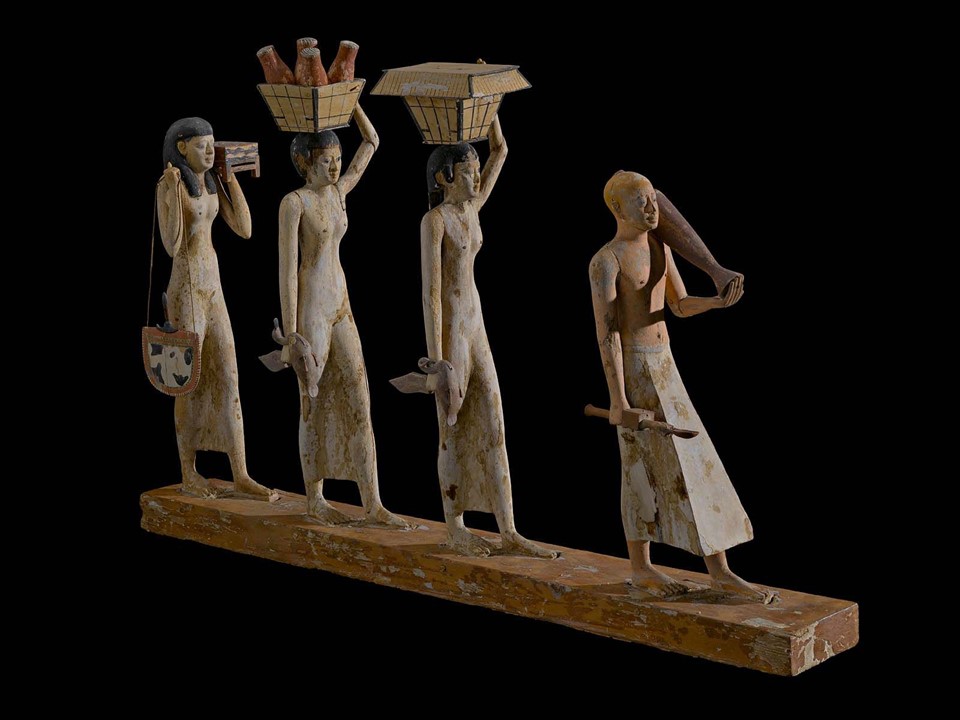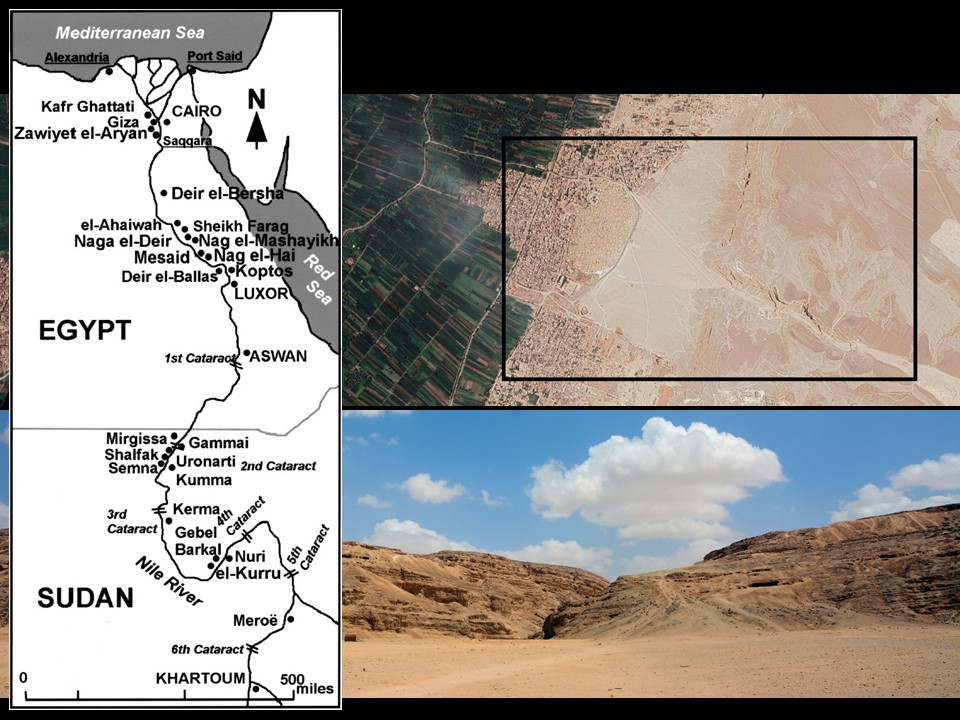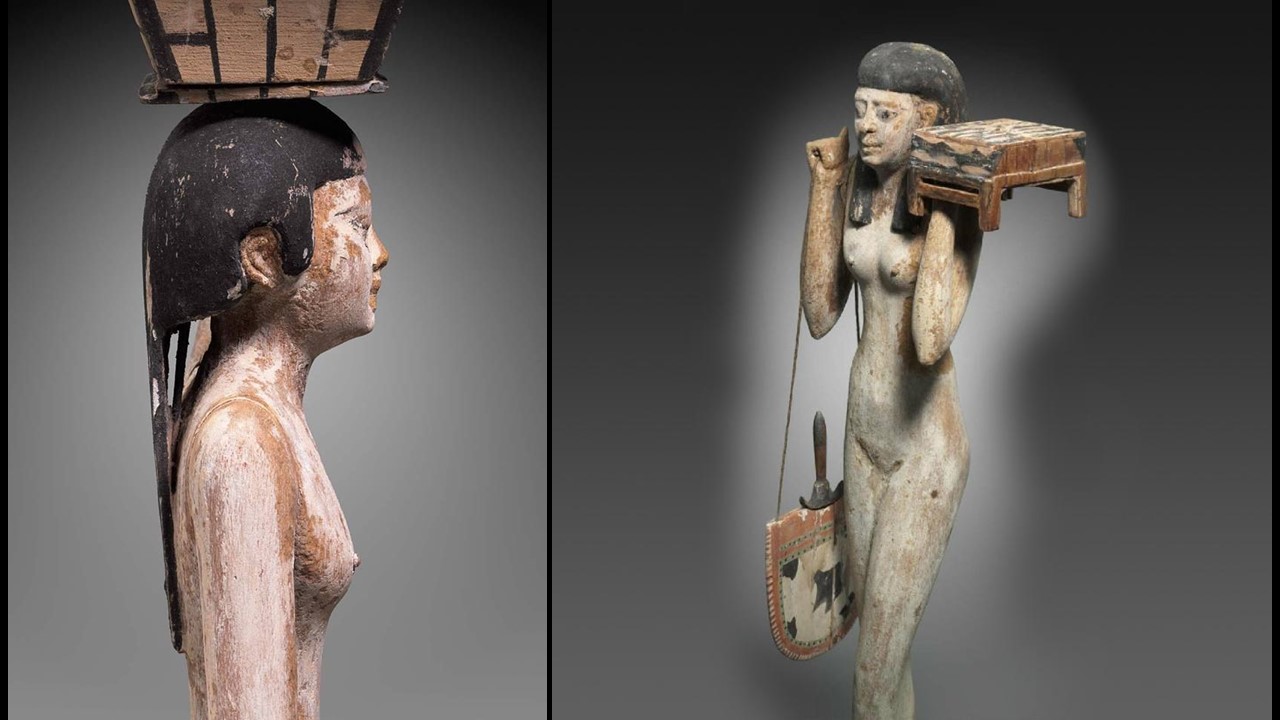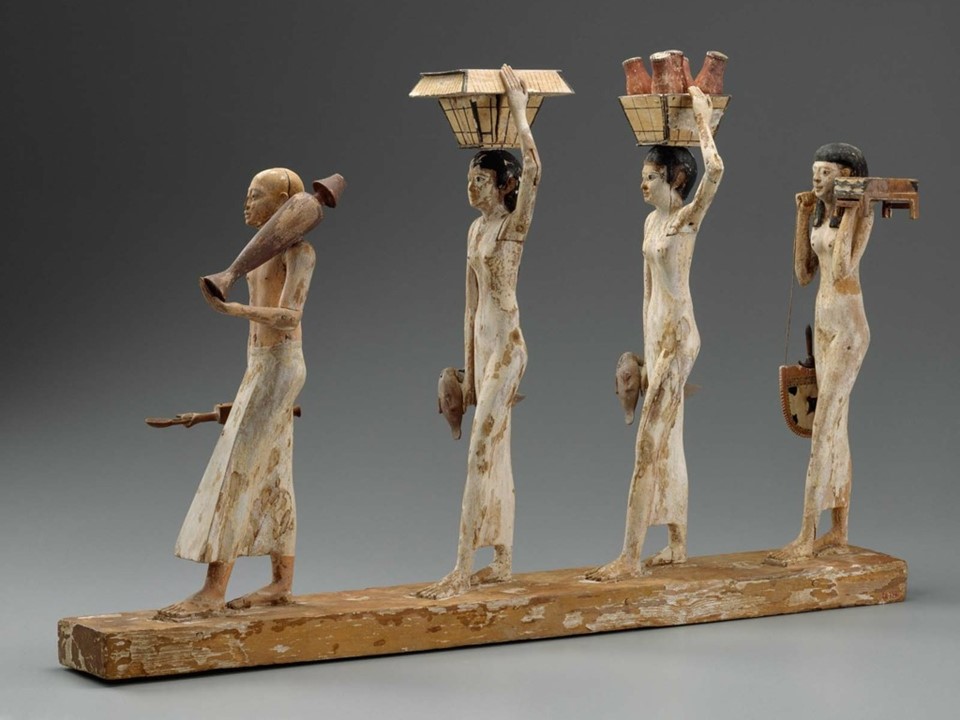
https://gr.pinterest.com/pin/670473463254087082/?nic_v3=1a7FXhvpJ
In a 1915 excavation, archaeologists from the Harvard University-Boston Museum of Fine Arts Expedition discovered, explain the MFA experts, the entrance to a tomb at the picturesque site of Deir el-Bersha in Egypt. Inside, the MFA team found, in jumbled array, the largest burial assemblage of the Middle Kingdom (2040-1640 BC) ever discovered. The tomb, designated Tomb 10A, was filled with the funerary equipment of a local governor by the name of Djehutynakht and his wife, also named Djehutynakht. Robbers had stolen the finest jewels but left everything else, including the severed (but nicely wrapped and painted) head of one of the Djehutynakhts. The tomb contained four beautifully painted coffins, one of which, the famous “Bersha coffin” (the outer coffin of the governor), is arguably the finest painted coffin Egypt produced and a masterpiece of panel painting. The tomb also included Djehutynakht’s walking sticks, pottery, canopic jar, and miniature wooden models that were made for the burial but reflect life on Djehutynakht’s estate, including some 58 model boats and nearly three dozen models of daily life such as individual shops for carpenters, weavers, brick-makers, bakers, and brewers. Of these, the best known is the exquisitely carved Bersha procession of a male priest leading female offering bearers. https://www.mfa.org/exhibitions/secrets-tomb-10a
During the Middle Kingdom, and for reasons we do not know, a new trend occurred in Egyptian burial customs. Miniature models made of wood, a less costly material, were manufactured in large numbers and placed in the burial chamber to furnish provisions for the deceased in the afterlife. In symbolically providing for the tomb owner’s needs, the models functioned in much the same way as painted scenes of these activities did on the walls of tomb chapels. https://collections.mfa.org/objects/143887
A variety of boats, food products, craftsmen and workshops, soldiers, servants, house models, and agricultural activities, are among the most popular representations. They are three-dimensional, and small in size, made out of wood, and colorfully painted. The fact is that the artistic quality of these models varies. However, the Middle Kingdom funerary models are precious as they convey a liveliness and energy that give us a sense of the bustling activities of Egyptian daily life. They also demonstrate innovative poses and subjects that would never have been attempted in the more formal sculptures that represented the tomb owner and his family. https://collections.mfa.org/objects/143702/model-of-a-granary;jsessionid=2E377953D2424D2AFEA2C5AB2332B8C7?ctx=bc58e347-f685-466f-8431-dabc79fda065&idx=32

The Tomb of Djehutynakht put on view the largest collection of wooden models ever discovered in Egypt. The archaeologists, excavating the site in May 1915, discovered the ransacked Tomb of a local governor, stripped of all precious artifacts except humble items of clay, wood, and paint. They discovered 58 model boats and nearly three dozen models of daily life such as individual shops for carpenters, weavers, brick-makers, bakers, and brewers. Of these, the best known is the exquisitely carved Bersha Procession of a male priest leading female offering bearers. https://www.mfa.org/exhibitions/secrets-tomb-10a

https://gr.pinterest.com/pin/405886985159696252/ and https://www.reddit.com/r/AgeofBronze/comments/qhkhq8/procession_of_offering_bearers_egypt_deir/
The MFA experts believe that the Bersha Procession stands out in every aspect. The skill and delicacy with which it was carved, and painted, they state, rank it among the finest wooden models ever found in Egypt. https://collections.mfa.org/objects/143592/model-of-a-procession-of-offering-bearers-the-bersha-proce?ctx=913074da-57e1-4b97-86d5-d4064c9e2c0e&idx=26

https://www.facebook.com/photo?fbid=1926909784017802&set=pcb.1926910000684447
The composition is simple, yet elegant, finely carved and subtly painted. Four figures, a man and three women ‘march’ towards the deceased Djehutynakht bringing offerings to sustain his Ka in the afterlife. They bring him food, drink, items of personal adornment, and the incense used to attract and appease divinities and the blessed dead. https://collections.mfa.org/objects/143592/model-of-a-procession-of-offering-bearers-the-bersha-proce?ctx=913074da-57e1-4b97-86d5-d4064c9e2c0e&idx=26
Simply put, I am completely awestruck by the high quality of craftsmanship and anecdotal details of the Bersha Procession model. So much so, that I dream of visiting the MFA once more!
For a PowerPoint on the contents of the Djehutynakht’s Tomb (Tomb 10A), please… Check HERE!
For a Student Activity inspired by the Bersha Procession, please… Check HERE!
The Boston Museum of Fine Arts received the contents of Djehutynakht’s tomb (Tomb 10A) as a gift from the Egyptian government for their assistance in the 1915 excavation. Since 1920 the Bersha finds are in Boston. https://www.mfa.org/exhibitions/secrets-tomb-10a